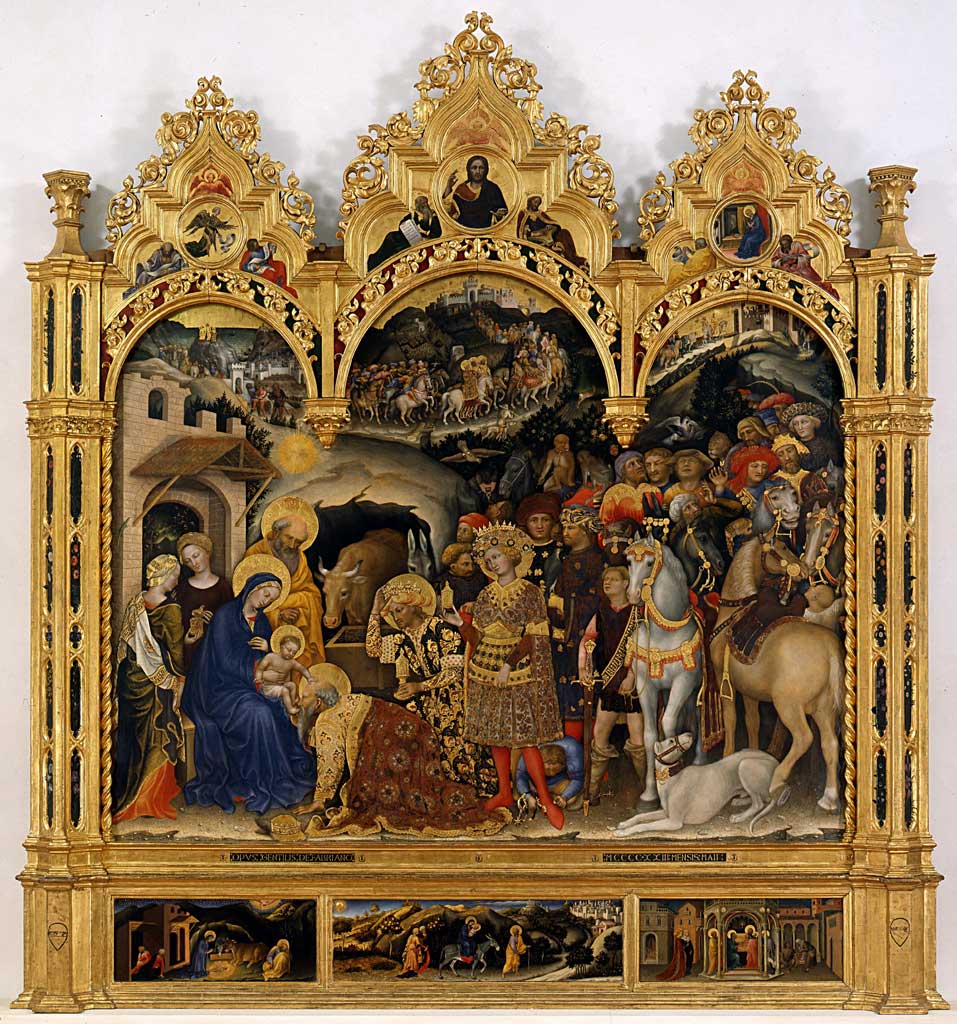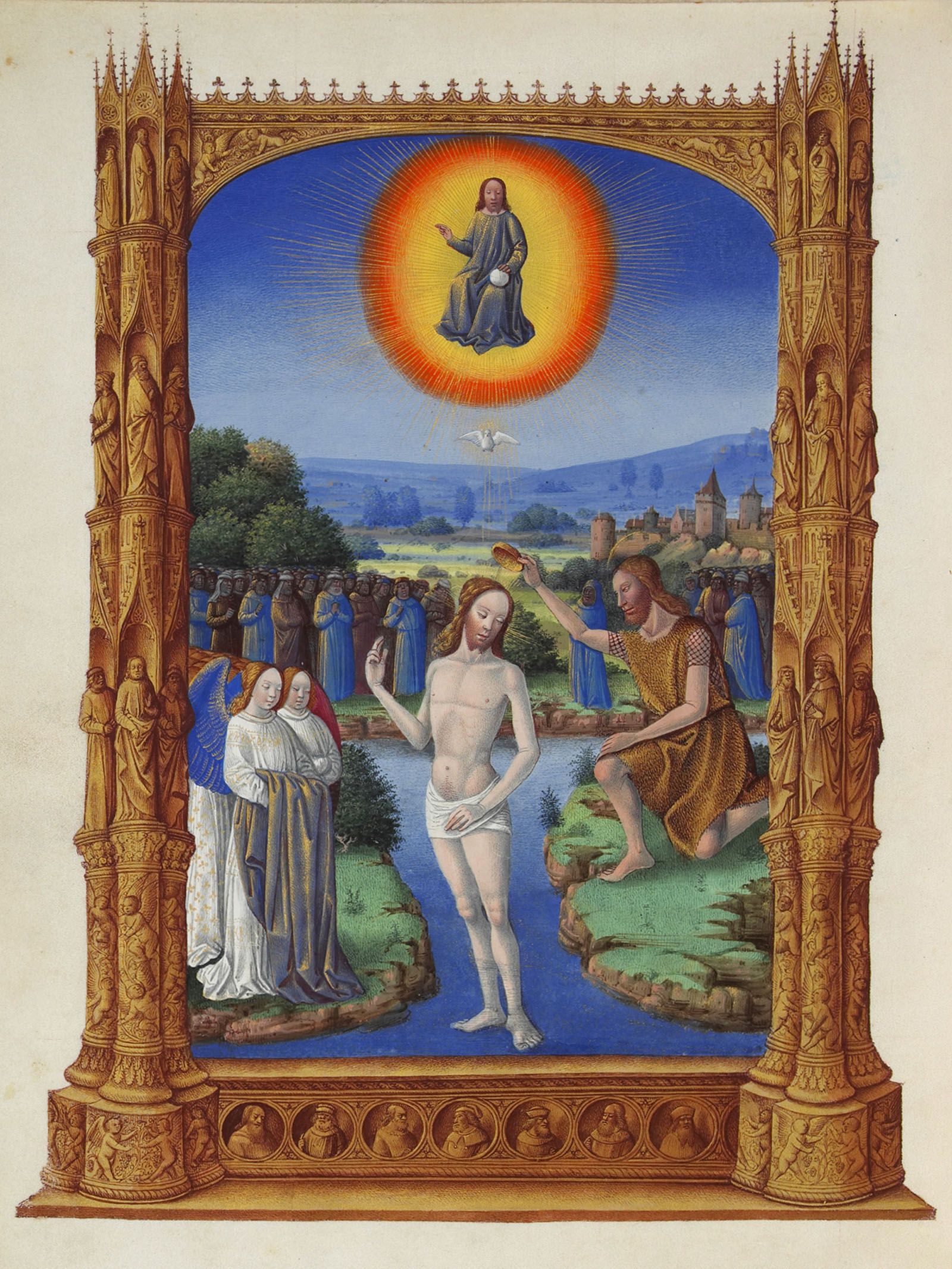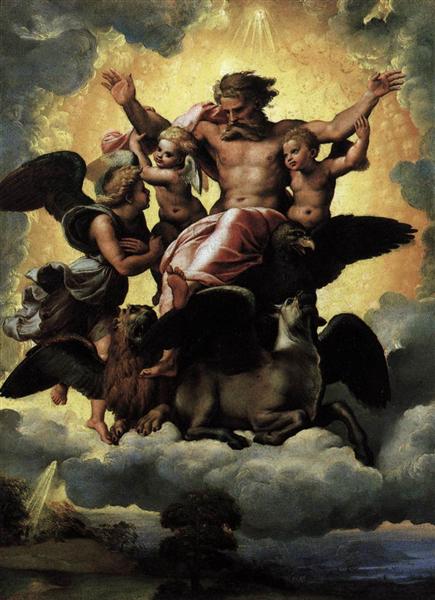 |
| Filippo Lippi, Annuciation, 1435 |
I feel like painting involves a lot of trust. That every time you look at a piece of art you take a leap of faith, most times this jump is strictly metaphorically, but on that rare occasion a painting will touch on a such a level that your physical body will react. Whether through a single tear shed or a look of jaw-dropping awe.
Unfortunately, Filippo Lippi’s Annunciation painted in 1435 is not that painting. Though I argue that Renaissance art takes a bit more faith than modern. I believe this stems not only from the context, but the viewer herself. To truly comprehend a Renaissance painting one needs more than rudimentary knowledge of color and composition. We need something more to understand.
I feel that’s why Renaissance art often seems so tedious. You can’t look at a piece of art from the 15th century and automatically assume that Mary’s hand placement indicates that she feels conturbatio or disquiet. Let alone how do you know the woman in blue is the mother of Christ, the virgin?
I am not a person of the 15th century, so how do I see a painting like one? And what does it mean when I shift my own perspective to fit someone else's? As I step in my Quattrocento shoes I understand that due to strict contracts set up by patrons of the Church and prominent families like the Medicis in Florence that automatically the artist must play be someone else’s rules.
Despite contracts assigning what percentage of Ultramarine blue must be used on Mary’s gown or the general composition of the painting itself, artists still held some control. Lippi when painting his Annunciation knew that in some way or another he had to tell the story of the angel Gabriel coming to tell Mary that the son of God lived within her. Now from here according to Michael Baxandall in his book, Painting and Experience in Fifteenth Century Italy, Lippi had five choices in choosing how to display Mary: "Conturbatio-disquiet, cogitatio-reflection, interrogatio-inquiry, humiliatio-submission, or meritatio-merit" (Baxandall 51).
For his painting, Lippi ultimately chooses conturbatio or disquiet, the viewer can determine this by either eliminating all others or evaluating Mary’s posture in addition to her facial expressions. She bows her hand, clutching her abdomen in awe, twisting her hands around her garments knowing that she is now responsible for bringing the son of God into the world. Her face, with her half-opened eyelids peering down hints at the curiosity, excitement and fear that her pregnancy brings.
Although Lippi attributes Mary with human emotion, he must include a reference to flowers, white lilies, and paint the angel Gabriel with wings and kneeling towards Mary in order for his painting to qualify as an Annunciation. The indicators of the Gabriel’s kneeling, his wings, Mary in blue, the white lilies all allow the general public of the 15th century to identify with the painting.
With his requirements out of the way, Lippi may now paint freely. He separates Mary and the angel Gabriel with a column, giving the impression that Gabriel exists only as an apparition in Mary’s mind. She receives his words from the songbird that spouts the latin from it’s beak. Mary exists on slightly higher ground than Gabriel, demonstrating that although it appears they occupy the same space in reality they do not. Gabriel's side of the room, allows the light to flow freely with airy blues tones covering the walls and window drapery. As for Mary’s side, the only light exists in a circle around her body indicating the divine connection that exists within her moment with Gabriel. The rest of her room falls dark with earthy tones occupying the space around her. Within her room, red acts as the only other color, a representation of charity, it seems fighting that it stems from garments around her heart.
Lippi creates a sense of depth through his open spaces in the background of the painting. The book and rose on the bookshelf behind Mary hint at her beauty-the rose and her devotion- the bible. Although not particularly ornate, I adore Lippi’s Annunciation for the comfort I feel when I look at the connection between Gabriel and Mary. At the scariest moment of her life, Lippi reminds me that she is in the light and she will be okay.
Baxandall through his book helps one to understand that "something more" that Renaissance art requires. I used to grow frustrated by attempting to remember the significance of triangles and circles around paintings, the meaning of colors and hand gestures; but now I understand that although I might not initially get it. I don’t need to. That sometimes the most profound paintings are not only the beautiful ones, but the ones that force you to open up a book and understand that Mary is never as simple as you believed she was.
So I urge you to jump off that ledge and land in the world of 15th-century Italy, because I promise you will not be disappointed.





















